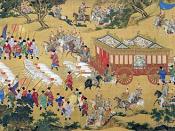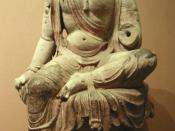A book The Sextants of Beijing by Waley Cohen view China from a Western point of view. In this book Chinese emperors, Chinese governments, and Chinese people were engaged by the outside world, and wanted to study and learn foreign goods and ideas. However, at the same time they were feared that they might lose political and moral as well as their Chinese values and traditions. In each chapter, the author explained the overview of China's contracts with other civilizations, how China participated in a network of international exchange all around the world.
In the book, it started out from the year between 629 through 645, which was the Tang dynasty. In this time, Han China was interested in establishing political and commercial relationships with others through trade. China began to trade silk and gold with Central Asia in regular basis and in return, China imported spices, woolen fabrics, and military projects from India.
According to Waley Cohen, the trade expanded for a number of reasons during the Tang dynasty. The first was simply the attractiveness of the success and cosmopolitan Tang court and society. The second was an increase in seafaring skills and risky attempts that were learned through trade. The third was the change of goods that the China was exporting. Skills that China learned was the most wanted product for all the Chinese. However, ceramics began to up rise as the leading of exports and the trade of silk production lost when silkworm cocoons were smuggled out from China. Even though fine silks were remained in a great deal and were still traded around the world, development of porcelain was much finer than earlier ceramics. Also, during this period the most influential features of the traffic were the spread of Buddhism from India to China.


